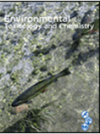Multigenerational Effects of Nickel on Daphnia magna Depend on Temperature and the Magnitude of the Effect in the First Generation

Scientific abstract
Ecological risk assessment (ERA) is commonly based on single generation ecotoxicological tests that are usually performed at one standard temperature. We investigate the effects of nickel (Ni) on Daphnia magna reproduction at 15, 20 and 25°C along four generations. Multigenerational Ni effects on D. magna reproduction depended on the magnitude of the effect in the first generation (F0) and showed very different patterns at different temperatures. At low effect level concentrations (<EC10 of F0), chronic Ni toxicity at 15 and 20°C did not increase along four generations, and the increase of Ni toxicity at 25°C observed in F1 and F2 in some Ni treatments did not persist into F3, where complete recovery of reproduction was observed. At higher effect level concentrations, the multigenerational Ni effects depended on the test temperature.
In F0, Ni toxicity was 6.5-fold lower at 25°C than at 15°C (based on EC50), but the temperature effect on Ni toxicity was not explained by differences in Ni accumulation. At lower temperature lower internal Ni concentrations in D. magna were necessary to induce the same Ni toxicity than at higher temperature.
Overall, our results indicate that low single-generation chronic effect concentrations of Ni to D. magna (here EC10) are also protective in a long-term, multigenerational context and that temperature should be taken into account in ERA of Ni.
Full reference (link):
Pereira, C. M.S., Everaert, G., Blust, R. and De Schamphelaere, K. A. C. (2018), Multigenerational Effects of Nickel on Daphnia magna Depend on Temperature and the Magnitude of the Effect in the First Generation. Environ Toxicol Chem. Accepted Author Manuscript. doi:10.1002/etc.4135
